8:15 a.m.
Table of Contents
Breakfast at Cabin Coffee
For our day trip to Mason City, Iowa, we wanted to explore some of the best things to do there. And we needed some sustenance for the day ahead, so we decided to stop at Cabin Coffee Company before catching up with our guide for the architectural walking tour. Walking through the door, the fragrance of roasting coffee beans woke me up even before I had the caffeine. They feature a variety of single-origin coffees from all over the world—light roasts to dark. Tea and fruit smoothies are other great ways to start your day if you aren’t a coffee drinker.
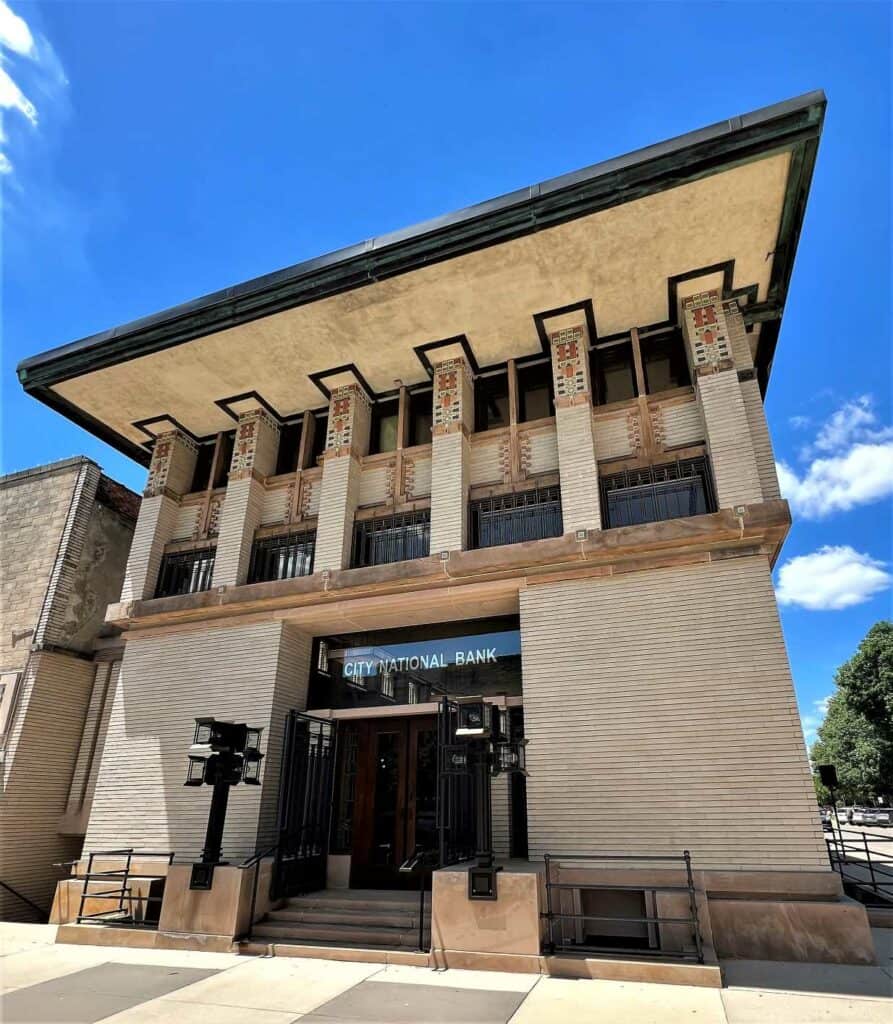
9:00 a.m.
Architectural Walking Tour of the Rock Crest/Rock Glen National Historic District
On this trip, we wanted to check out some of Mason City’s historic architecture. So, we started our day trip to Mason City on an architectural walking tour. The complete tour features 28 buildings, each offering an extraordinary architectural detail. I’ll tell you about some of my favorites in this post, but if you’d like to duplicate our tour, you can sign up for one here. The excursion is 90 minutes long and covers 1.3 miles in uneven terrain. Tours take place from May through September, on Fridays, Saturdays, and Sundays.
While Frank Lloyd Wright was working in Mason City, he pitched the idea of designing other homes in the area. As a result, Walter Burley Griffin and Barry Byrne started a new development known as the Rock Crest/Rock Glen neighborhood. Today the community is a National Historic District, the largest group of Prairie School homes in a natural setting in the nation.
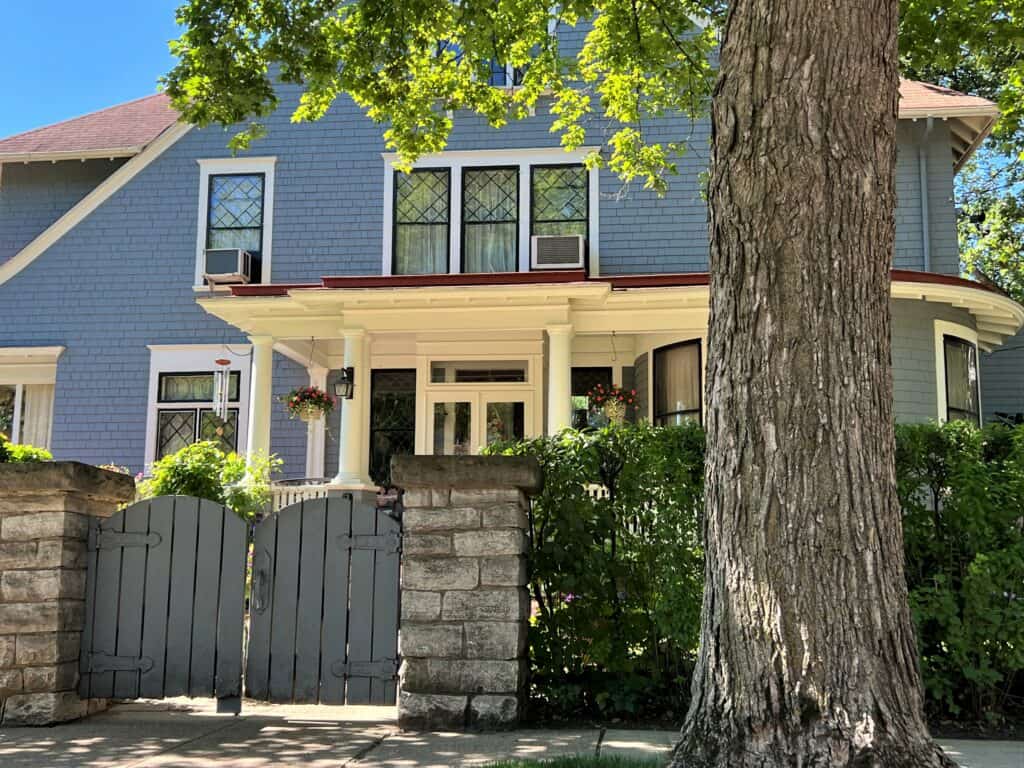
Duncan Rule House
Built between 1908 and 1909, this shingle-style home features a blue and red porch and an A-line roof. They use this roof style to draw your eye up while the pillars guide you to the home’s entrance.
Meredith Willson Footbridge
To fulfill the builder’s promise of the neighborhood being just a 10-minute walk to the post office, they needed to build a footbridge over Willow Creek. The arched bridge has concrete piers, a three-bay steel truss, and a concrete walking surface. Its name honors Meredith Willson, composer of The Music Man.
Curtis Yelland House
William Drummond designed Curtis Yelland’s Prairie School home in 1910. The home’s brown, beige, and gold colors mimic the colors of the prairie in autumn. The decorative movement of the sides represents the winds on the prairie. The only way to access the porch is through the inside of the house, giving the homeowner privacy.
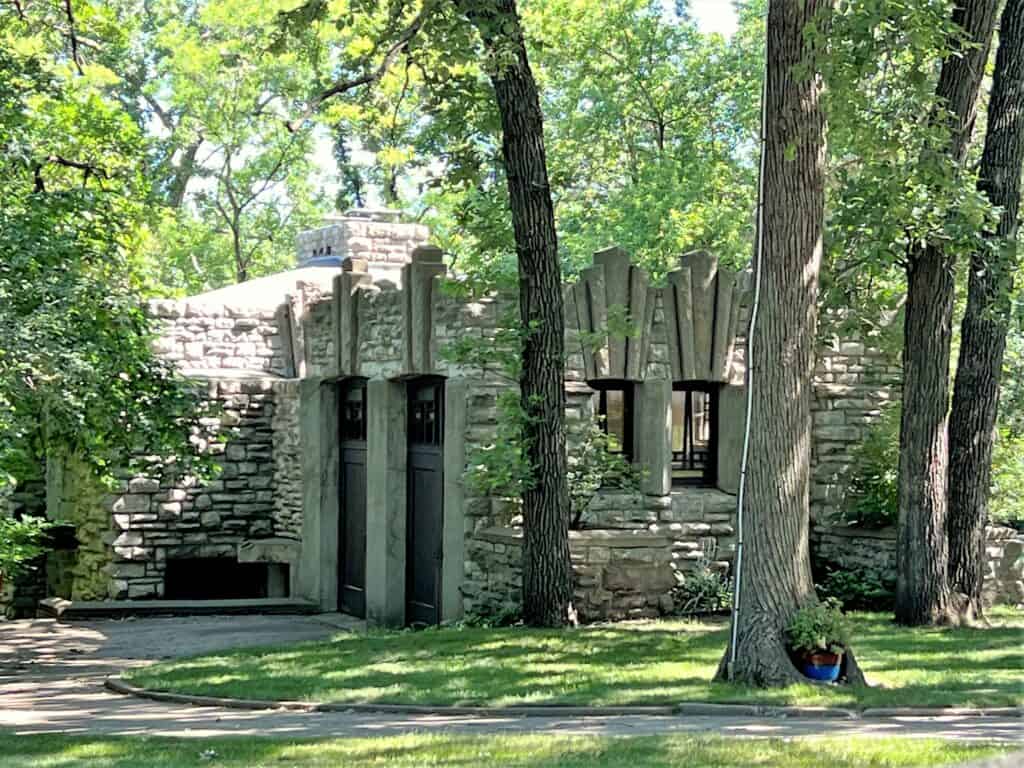
Joshua G. Melson House
Built in 1912, Melson’s Prairie-style home features a compress and release entrance to encourage visitors to move from the compressed access to the lifted areas where they should mingle. In addition, the home features a circular driveway and drive-through garage since cars at the time didn’t have a reverse. Today locals refer to the home as the Castle House.

Tom MacNider House
Designed in Wright’s Usonian style for Tom MacNider, the vice-president of the Northwestern States Portland Cement Company, the home features the use of oversized concrete blocks. Characteristics of the Usonian type include one story with a horizontal orientation, small at about 1,500 square feet, a low simple roof, and no basement or attic.
The term American refers not only to the United States but also to South America and Canada, so James Duff Law, a twentieth-century writer, coined the term Usonian. The word is an acronym for the United States of North America.
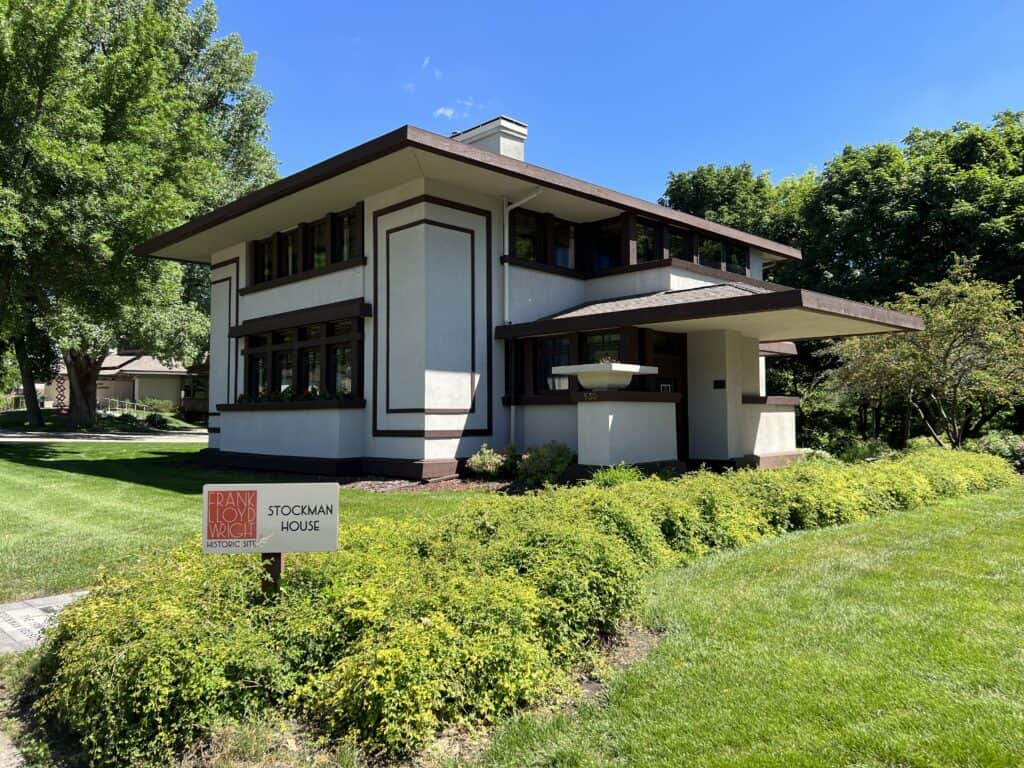
George C. Stockman House
Built in the Prairie style for Dr. and Mrs. Stockman, the home was Wright’s most elaborate house at the time. Built with an open floor plan, the Stockman home features cantilevered roofs, a second-story balcony, and a projecting entrance. These features allow the house to become submerged in the surrounding environment.
You may tour the inside of the Stockman house. Tours start at the Architectural Interpretative Center.
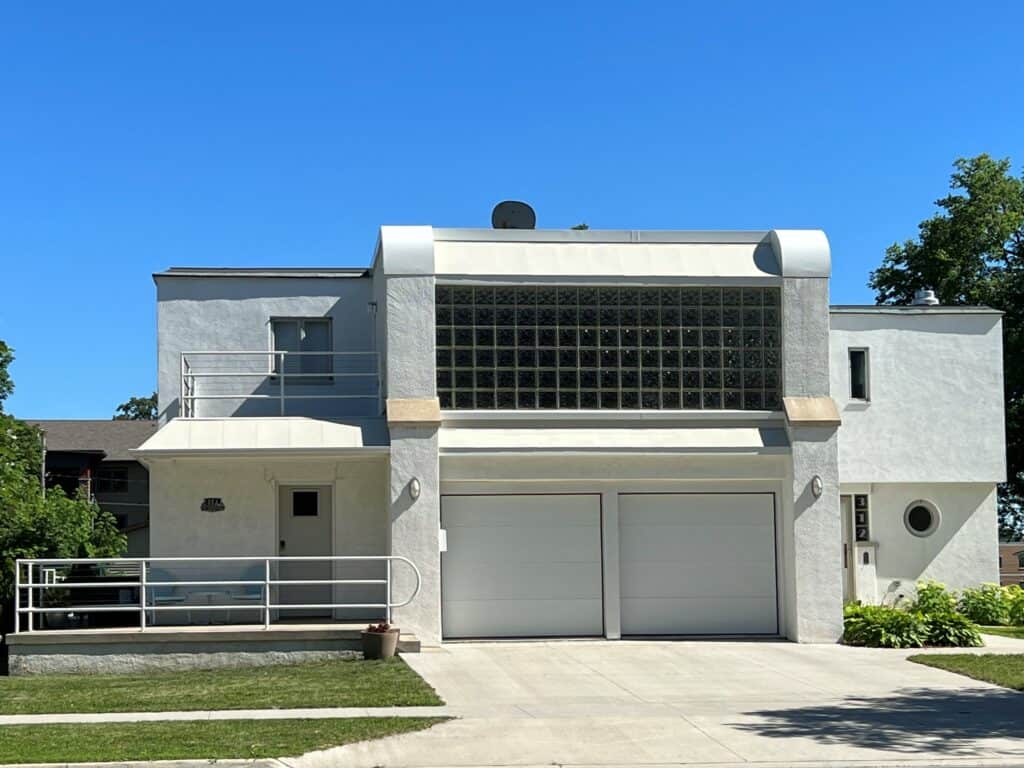
Egloff House
Earle Richard Cone designed the home in 1938. He combined elements of three of the period’s contemporary styles—Art Deco, Moderne, and International. The glass block and railings are characteristic of the design style.
Flooding damaged the home, and they moved it to its current location in 2008 to save it from demolition.
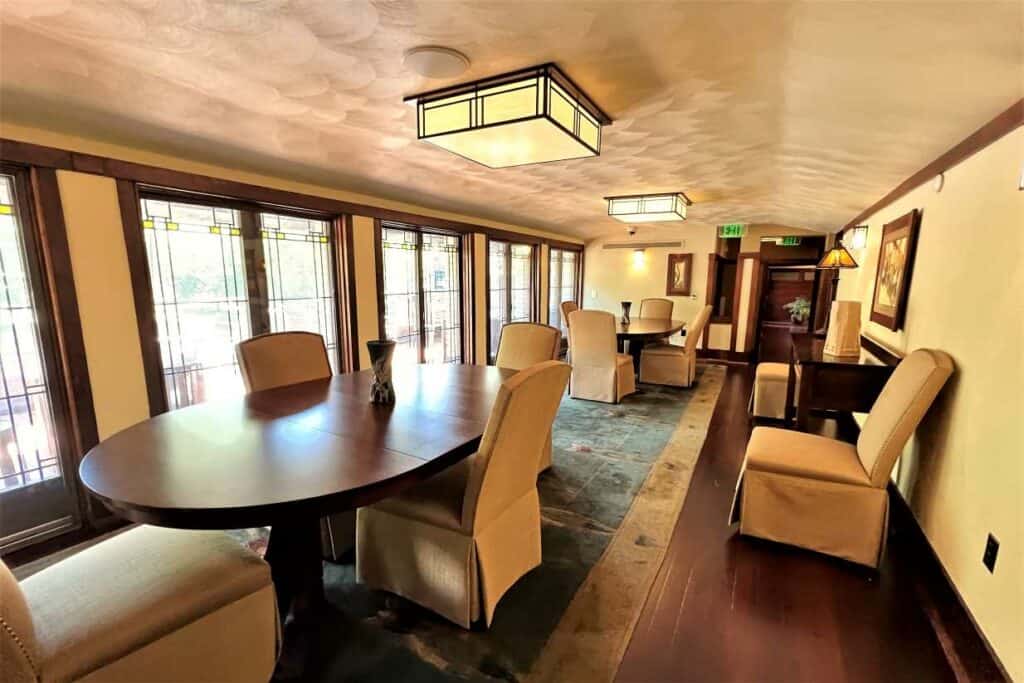
11:30 a.m.
Historic Park Inn Tour
A 60-minute guided tour with 14 stops around the Historic Park Inn is a must-do for architecture fanatics. The hotel showcases the trademark details of the remaining Frank Lloyd Wright-designed hotel.
The original hotel offered 43 rooms with shared bathrooms. Each room provided a bed, dresser, and sink. Today, the inn offers 27 unique rooms, each with a private bathroom. In addition, the rooms offer chairs or sofas and a work desk. I love having a desk in my room to complete some writing during the evening.
Although they don’t require it, I recommend you make a reservation for these tours. For more details about the Historic Park Inn, check out my article here.
In addition to architecture, explore the art by taking in the River City Sculptures on Parade. On display year-round, you’ll see some of these sculptures during the walking tour of the Rock Crest-Rock Glen Historic District.
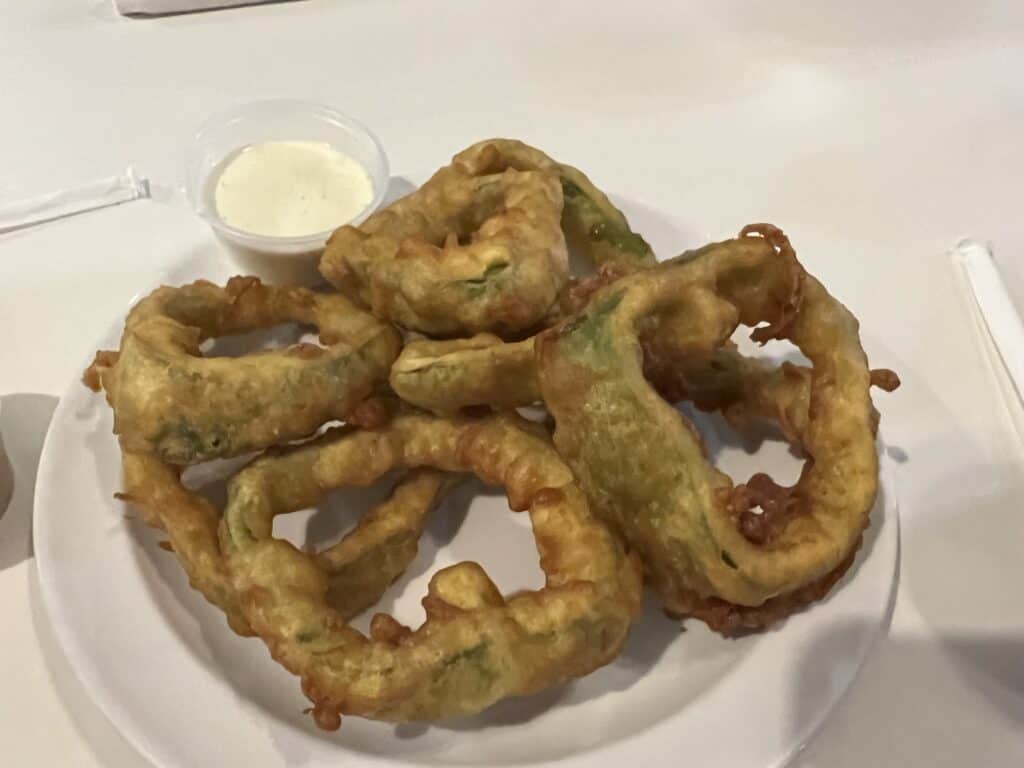
12:15 p.m.
Lunch at the Blue Heron Bar & Grill
After our walking tours of Mason City and the Historic Park Inn, it was time for lunch at The Blue Heron Bar & Grill. Once in a while, you find something different on a menu, and here it was, the green bell pepper rings, like onion rings, only bell peppers. Deliciously different!
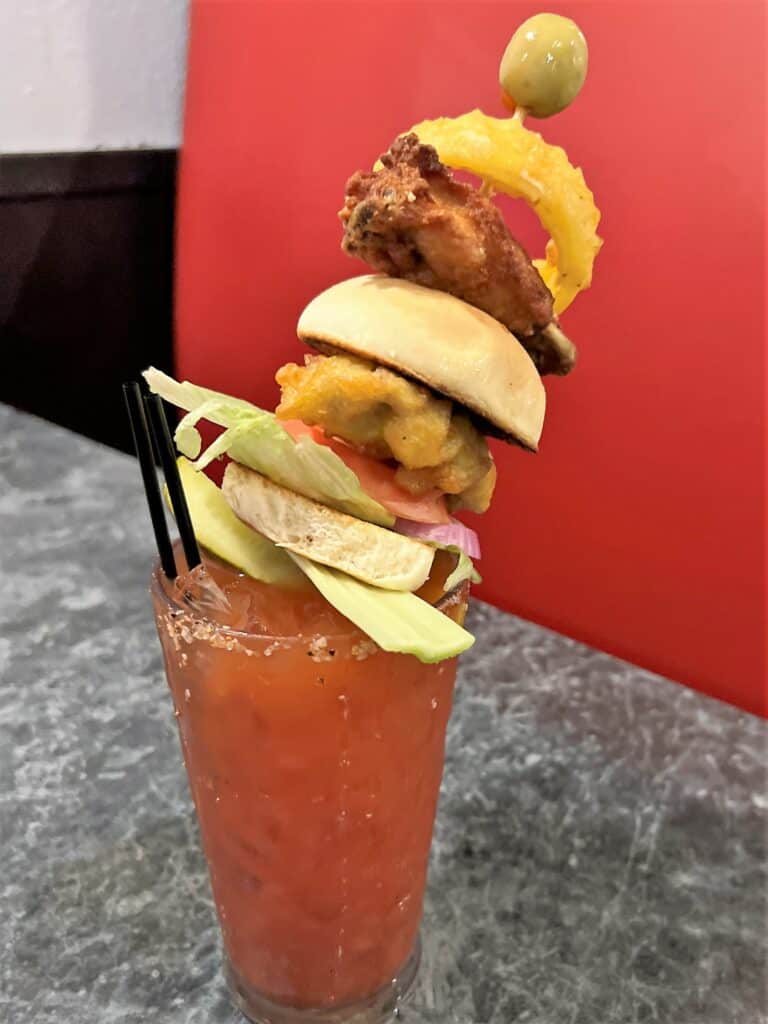
If you prefer to drink your lunch, the Wish You Were in Vegas Bloody Mary is what you need to order. They make a Bloody Mary using a house-made Bloody Mary Mix and then top it with a light lunch. It starts with a chicken wing, then comes a tenderloin slider, an onion ring, a stalk of celery, a pickle, and an olive. Of course, if you share some of those bell pepper rings as an appetizer, you’ll be full.
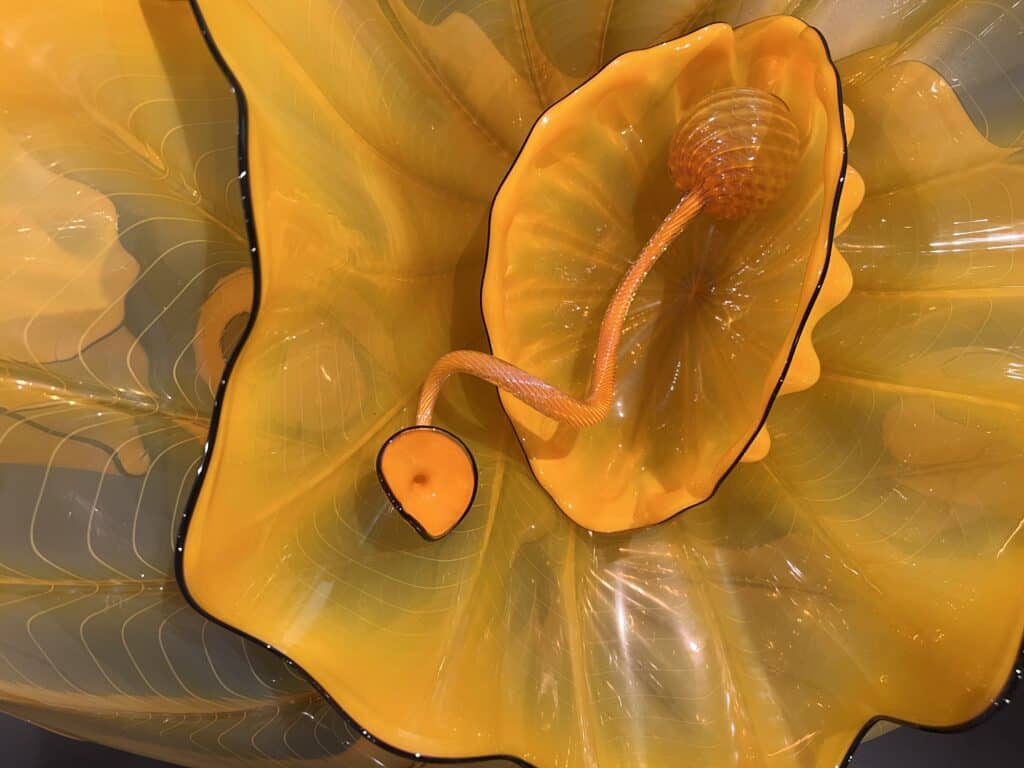
1:30 p.m.
Charles H. MacNider Art Museum
After lunch, we continued our day trip to Mason City with a visit to the Charles H. MacNider Museum downtown. Established in 1966, American art is the laser-sharp focus of their permanent collections. The artists have either been born in the United States or immigrated to it and created their work here.
On the architectural walking tour, we learned more about this English Tudor Revival house built in 1920. The building’s roof has rounded eave returns and ridges, making it look like an English cottage.
The museum, housed in a historical building, is open to everyone. To ensure accessibility, they don’t charge an admission fee. The museum’s collection includes 500 artifacts in their permanent collection displayed in seven galleries, including the art on the mezzanine.
My favorite piece of art was the single piece of Dale Chihuly glass, a giant yellow flower called Azteca Yellow Persian Set with Black Lip Wraps sitting in the display case. I’ve seen Chihuly’s glass as chandeliers in stunning groups high above the floor. Those are awe-inspiring! But the simplicity of this single flower allowed me to see the details up close and truly appreciate them at the Charles H. MacNider Art Museum. He created this blown glass piece in 2000.
They also offer rotating exhibits in their two temporary exhibit galleries. These displays rotate every two to three months and may include the works of international artists.
The museum also features two puppet galleries and has about 600 marionettes and puppets in its collection. In addition, they display Bil Baird’s marionettes, of Sound of Music fame and a native of Mason City, in an exhibit entitled the World of Puppets.
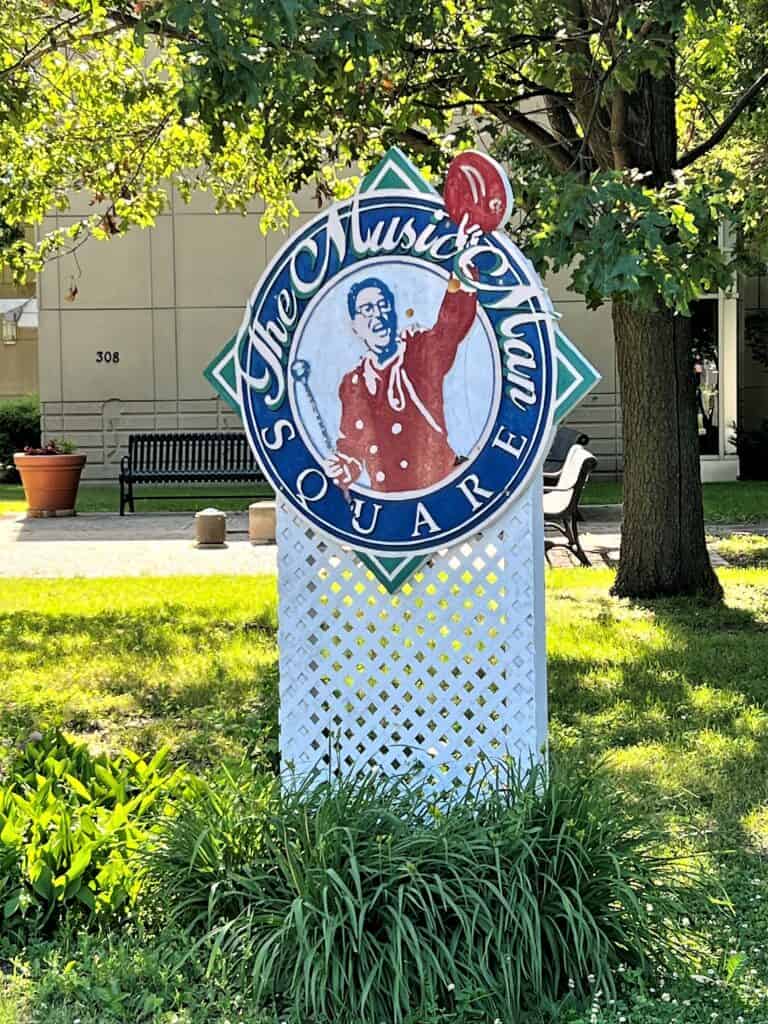
3:00 p.m.
The Music Man Square
At Music Man Square, we learned of another type of art, Meredith Willson’s music. If you haven’t already seen the Warner Brothers 1962 movie, The Music Man, I suggest you watch it before you visit. It will make your time at Music Man Square even more memorable.
Music Man Square includes three areas: The Music Man Square Museum, the 1912 Streetscape, and the Meredith Willson Boyhood Home. You’ll want to spend a couple of hours at this stop, where they have a docent-led tour of the boyhood home.
To add to the fun, pick up the I Spy Scavenger Hunt list at the front, where they have ten items you should be sure to find at Music Man Square, including the 76 trombones. I still remember that fun upbeat song from my youth: “Seventy-six trombones led the big parade, With a hundred and ten cornets close at hand.”

The streetscape replicates the Warner Brothers 1962 movie set, originally a 1957 Broadway production. You’ll find three stores shown in the streetscape and in the movie that were real businesses in Mason City in 1912—the Pleez-all Billiard Parlor, Jacey Squires River City Livery Stable, and Glanville and Sons Dry Goods and Mercantile.
At the museum, you won’t want to miss Meredith’s Grammy award, the first Grammy ever presented, his Presidential Medal of Freedom, and the piano he composed for The Music Man.
While you’re here, stop by the ice cream parlor for a tasty treat. If you’re only visiting for ice cream, tell the desk attendant, and you don’t need to pay admission.
If you’re looking for some secret Iowa destinations to put on your itinerary, Megan Bannister can help you out with her book “Secret Iowa: A Guide to the Weird, Wonderful, and Obscure.”

Meredith Willson’s Boyhood Home
We not only toured a museum in his honor but explored his boyhood home, which was full of musical instruments. As part of your admission to Music Man Square, the Victorian Queen Anne boyhood home tour provides insight into the talented family. His mother, Rosalie, was a piano teacher. Meredith’s sister, Dixie, wrote short stories and poems, and one of her short stories, “God Gave Me Twenty Cents,” was turned into a movie starring Shirley Temple.
5:00 p.m.
Check in to the Historic Park Inn
To make it a full day, we stayed overnight at the Historic Park Inn and left early the next morning. Initially, Frank Lloyd Wright created six hotels, of which they built five. Today, the Historic Park Inn is the only one remaining. Frank Lloyd Wright built the Historic Park Inn in 1910, and that’s only one of his buildings in Mason City.
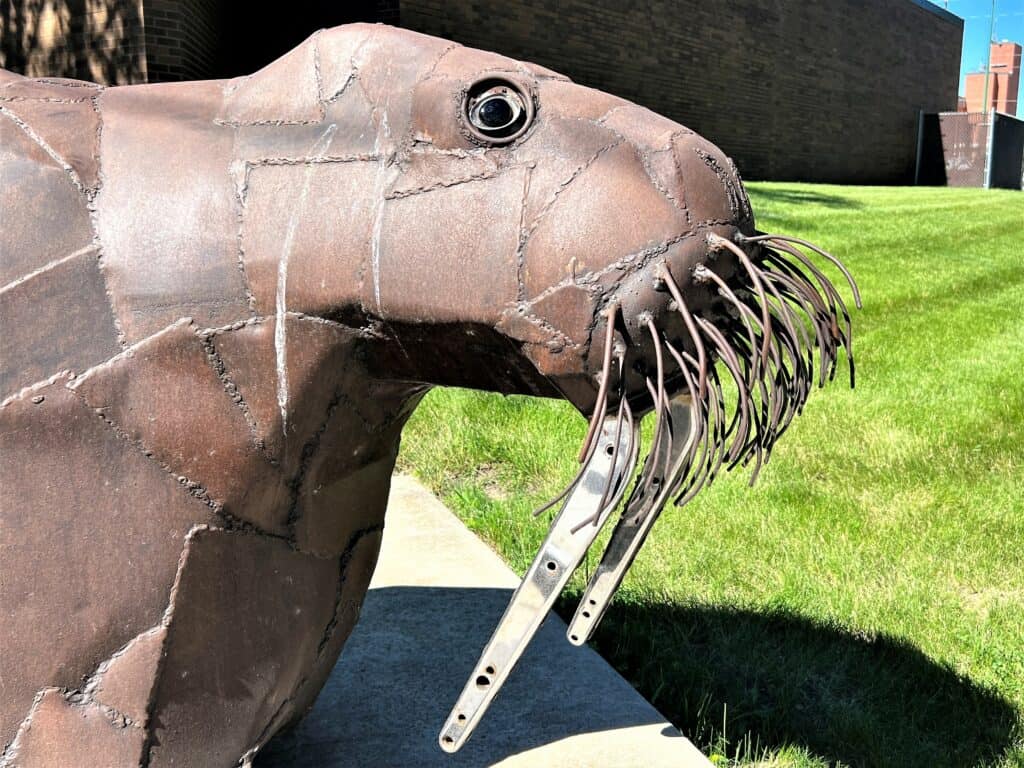
Sculptures on Parade
Mason City, Iowa, has a beautiful sculpture trail and this sculpture by Dale Lewis captured my heart. Named “I am the Walrus” after the Beatles song, it seemed unique. Look at the detail in his face and whiskers. The sculpture trail changes annually, so you’ll see something new no matter how often you visit.
6:30 p.m.
Dinner at Northwestern Steakhouse
We finished the day with dinner at Northwestern Steakhouse, specializing in Greek-style broiled steaks that melt in your mouth. This steakhouse has survived for over 100 years, so you know it has to be good. They serve Iowa beef and are the top steak house in Iowa.
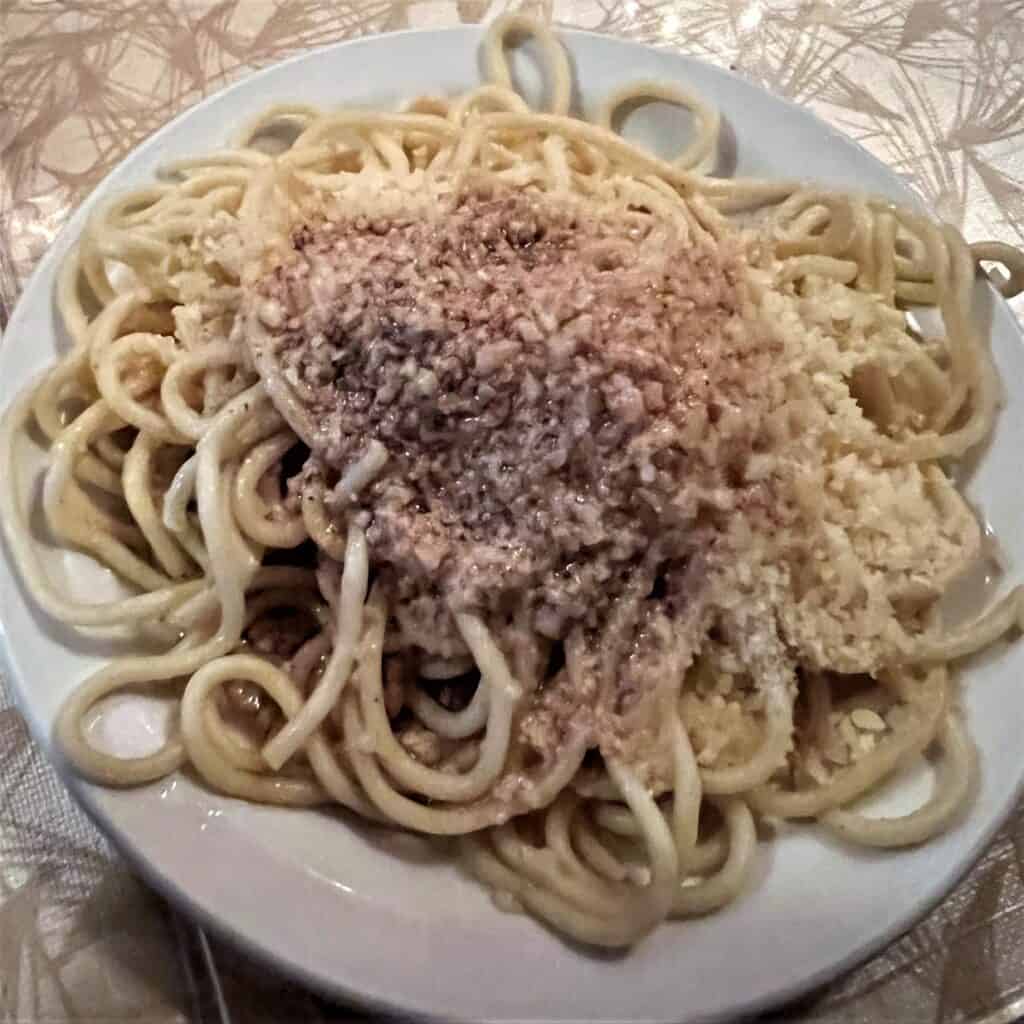
I had a petit filet that came with a salad, and I ordered of all things spaghetti as a side. When I travel, I have to have the house special; at Northwestern Steakhouse, that’s spaghetti. A buttery Greek-style pasta, topped with Parmesan and their special sauce. It doesn’t include tomato sauce. When I inquired about the special sauce, the server informed me that’s top secret. Even the cooks must sign a non-disclosure agreement before they’re allowed to work in the kitchen. That’s serious! I could only discern that it likely has garlic and some other Greek seasonings. In any case, it was delicious!
Have you ever been to Iowa? Where have you gone? What have you seen? If you decide to go, this itinerary should be a good start to your fun!
Looking for even more things to do in Iowa? Check out Sara Broers’ book 100 Things to Do in Iowa Before You Die.

If You Go
Getting There
Mason City, Iowa, sits in the Central time zone and Cerro Gordo County. United Airlines serves Mason City Municipal Airport (MCW) with daily flights from Chicago O’Hare.
How far is Mason City from?
| City | Distance |
| Clear Lake, Iowa | 10 |
| Des Moines, Iowa | 120 |
| Minneapolis, Minnesota | 135 |
| Madison, Wisconsin | 299 |
| Omaha, Nebraska | 253 |
| Chicago, Illinois | 337 |
Getting Around
The best way to get around Mason City is by walking or car. If you fly in, you’ll probably want to rent a car.
Pin this to your favorite Midwest Travel Board!
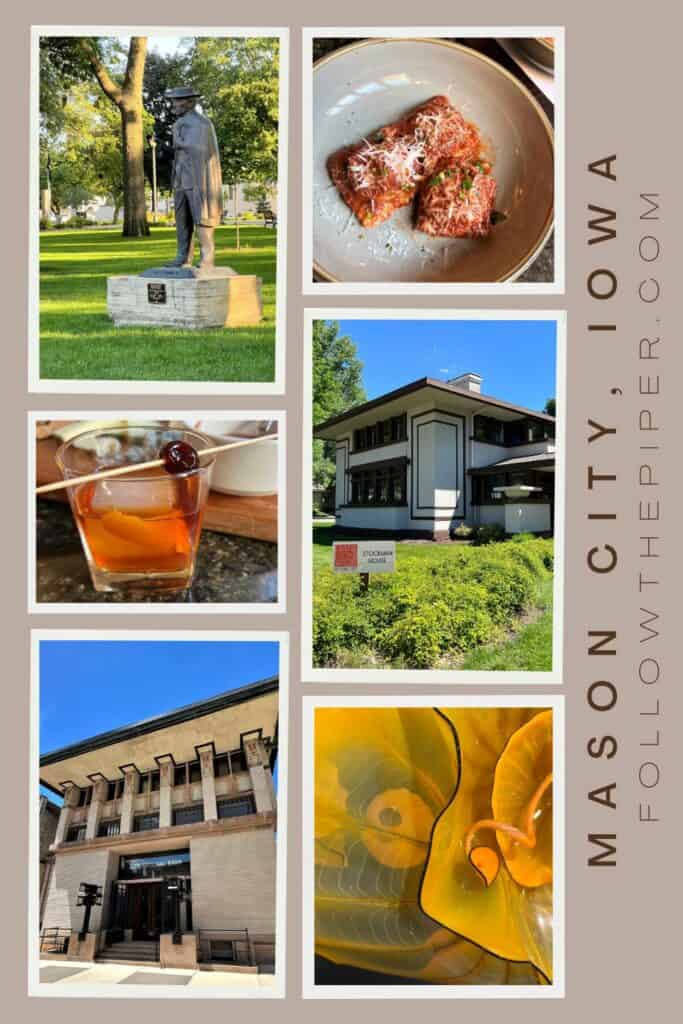
While Piper is a lifelong Michigander, she’s had adventures worldwide. Bomb-sniffing dogs chased her in the middle of the night in Bogota (working late), gate agents refused her boarding to Paraguay (wrong visa), and US Marshals announced her seat number on a plane while looking for a murder suspect (she’d traded seats). It’s always an adventure! She even finds exciting activities in her home state of Michigan, where she lives in Lansing with her husband, Ross Dingman, her daughter, Alexis, and two granddaughters.

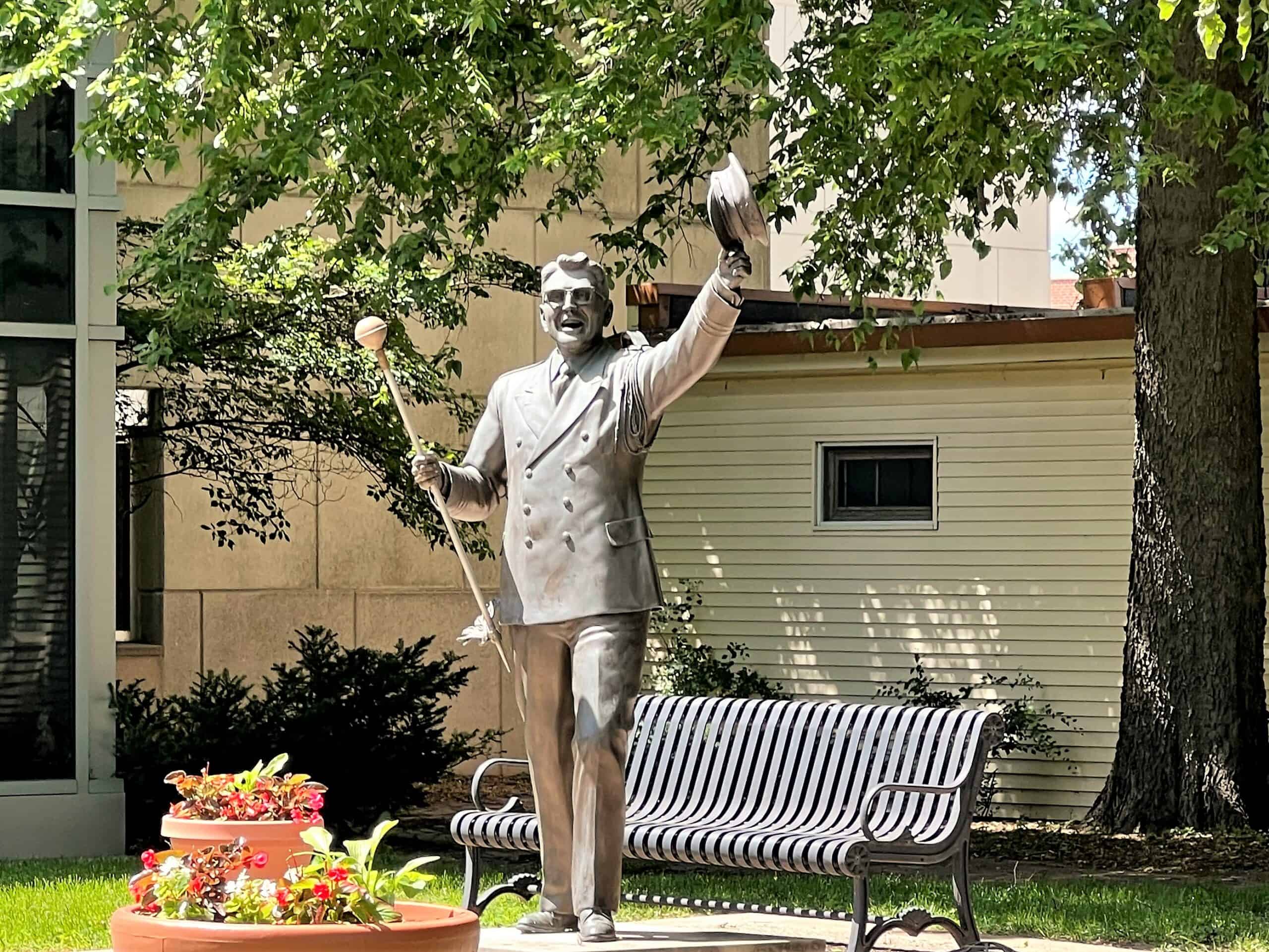

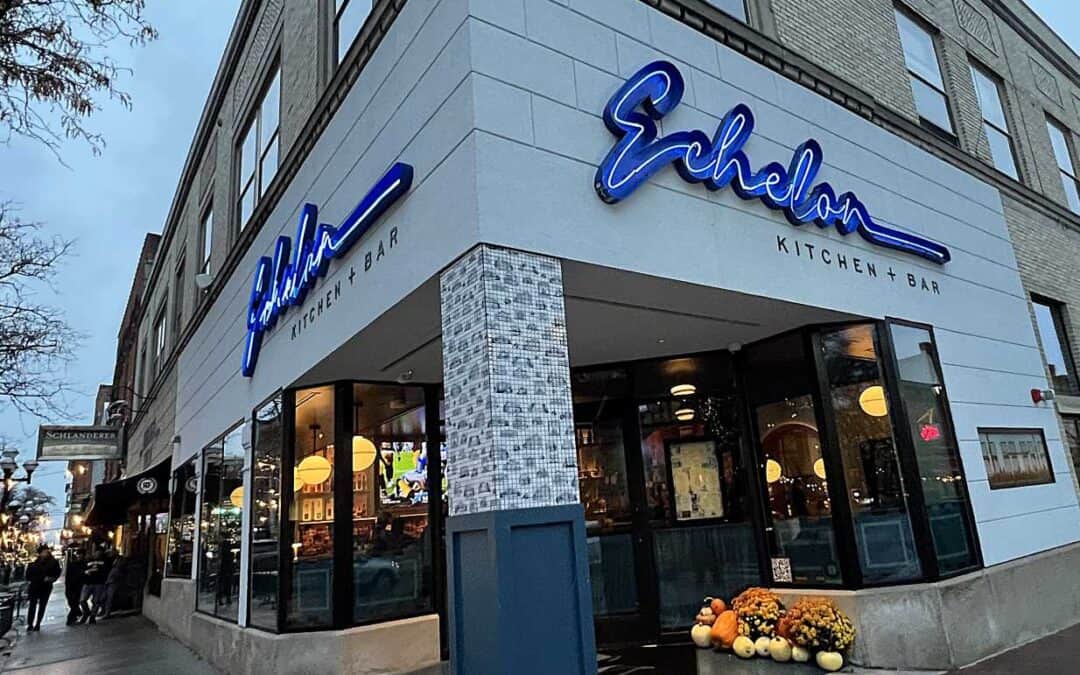

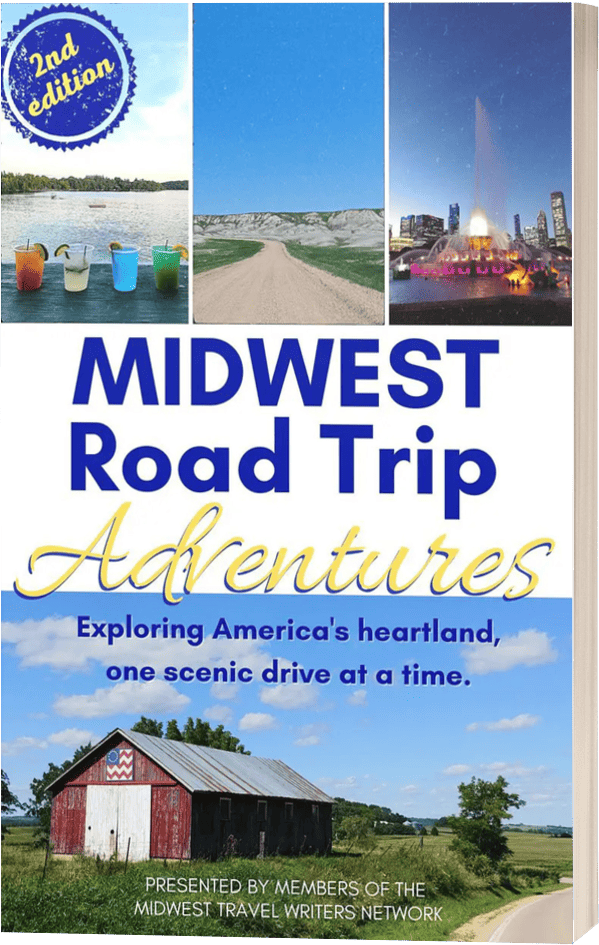
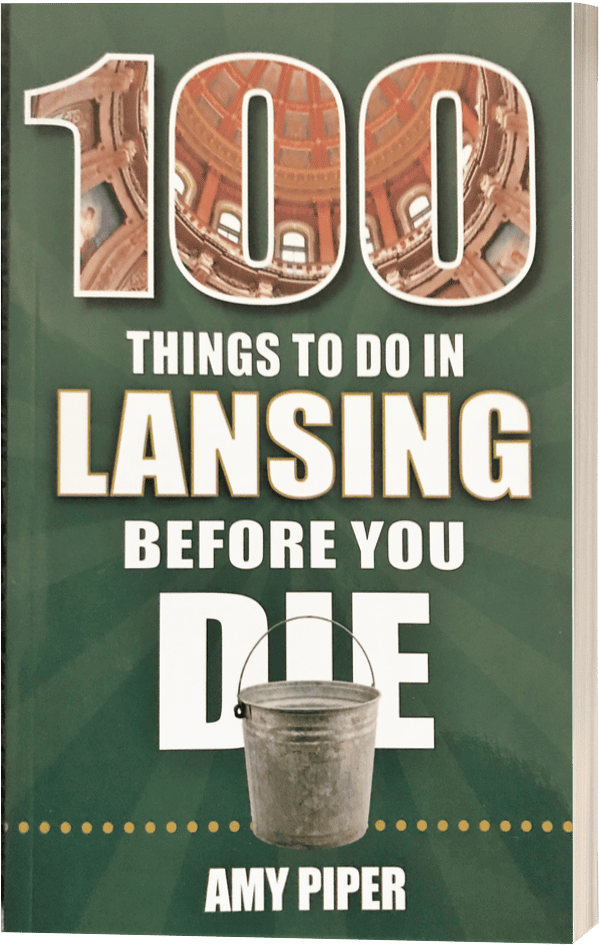
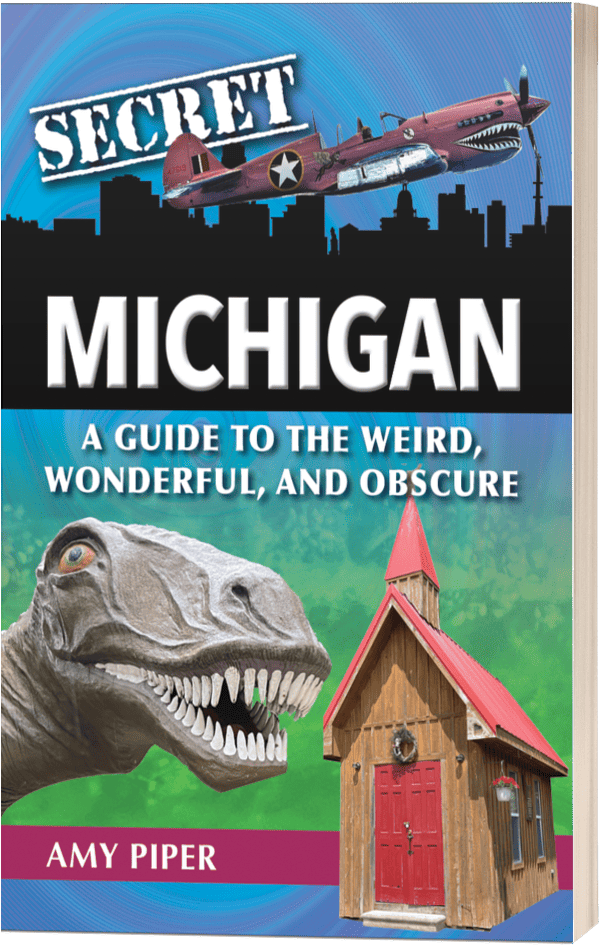
I’ve never been to Mason City, Iowa but it looks like a unique and fun place to visit. The Bloody Mary at the Blue Heron makes my mouth water! Would love to try that! 🙂
Wow, Mason City does have some impressive architecture. And holy cow, that bloody Mary at the Blue Heron!
My hometown! I will add that it is also great to tour on bike with marked lanes on many roads, bike paths and beautiful parks and neighborhoods to ride through.
I grew up in a small town just northeast of Mason City. I realize I’m biased, but for a relatively small city, Mason City has more unique things to see and do than most cities twice its size. But for a visitor, the best part of visiting the city is that there are no friendlier people, anywhere. Walking down the street, one feels almost compelled to smile and say hello to people you meet, because they’ll certainly smile and say hello to you. Friendliness is practically an expectation.